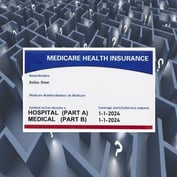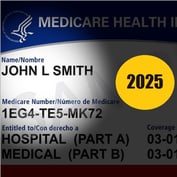By
The rise of the “consumer-driven health plan” is reminding group health advisors of the difficulty of comparing some preferred provider organizations with other PPOs and PPO network providers with other network providers.
The market has delivered a clear-cut vote: Employers in most parts of the country love PPOs.
Many plans that still call themselves health maintenance organizations act very much like PPO plans. Even the organizers of CDHPs have discovered that workers with health savings accounts or health reimbursement arrangements still like pre-negotiated PPO network discounts.
“The predominant health plan that wraps around the HSAs has been the PPO,” says Edward Pudlowski, a health and welfare expert at Ernst & Young L.L.P.
However, group health advisors find that comparing PPO costs is tricky for employers that self-insure their health plans.
Comparing quality with survey data or other statistics, as opposed to quick efforts to grill friends and neighbors about their PPOs, can be even trickier, Pudlowski says.
The National Committee for Quality Assurance, Washington, the group that publishes detailed health maintenance organization performance statistics, has been accrediting PPOs for several years, but it is just starting to persuade PPOs to publish their own health plan “report card” data.
“Better information on physician and hospital quality and performance data from PPOs and other health plans must become more widely available if consumers are expected to make informed choices and seek out quality care in the new medical marketplace,” the NCQA argues in its 2004 health care quality report.
So, what does all this mean for group health advisors?
Agents, brokers and consultants will have new opportunities to add value by helping employers come up with ways to shop for PPOs based on something other than price and gut instinct, experts interviewed predict.
For now, even the term “PPO” is a little hard to pin down. The term can refer to an insured, retail health plan that gives members access to a network of doctors, hospitals and other providers that have agreed to meet the plans standards for credentials and quality and accept the plans payment schedule. Many of those retail PPO plans are run by companies such as Anthem Inc., Indianapolis, and UnitedHealth Group Inc., Minnetonka, Minn., that also run well-publicized HMOs.
The term PPO also can refer to the provider networks that wholesale PPO companies develop and rent to insurers, HMOs, self-insured employer health plans, workers compensation programs, health discount card companies and others.
Even though some of the wholesale PPOs have a huge reachAtlantic Information Services Inc., Washington, says the biggest, Multiplan Inc., supplies provider networks used by 25 million Americansmost wholesale PPOs have built little consumer brand awareness. For most consumers, the only signs that the big wholesale networks exist are mysterious logos at the bottom of health plan membership cards.
Retail PPOs and self-insured plans set up as PPOs covered 55% of all members of U.S. employer-sponsored health plans in 2004, up from 11% in 1988, according to data from the Henry J. Kaiser Family Foundation, Menlo Park, Calif.
HMO penetration rose to 25% from 16% over that same period, but HMO penetration in the group health market peaked at 29% in 2000.
Over the years, the PPO has become so popular that many HMOs, other than the large HMOs run by Kaiser Permanente, Oakland, Calif., have tried to compete with PPOs by eliminating referral requirements for access to specialists, shifting to PPO-style payment arrangements and renting wholesale PPO networks to serve multistate employers.
PPOs also have beat out HMOs in the area of price. Back in the 1990s, “the HMO was almost always less expensive than the PPO, and it was definitely easier to deal with for the patient,” says George Issaeff, chief executive of Gemini Group Inc., Denver, a benefits broker. “Today, with most carriers, the PPO is less expensive.”
Meanwhile, many CDHP organizers who once bragged about their ability to free plan members from provider networks now give members the option of using PPO networks.
The idea of patients dickering over rates with their own doctors and hospitals has been “too much for the average employee to understand,” Pudlowski says.
Although “its possible for an individual to negotiate with a provider, the reality of that is that its very, very rare,” says James Herrington, chief marketing officer at Private Healthcare Systems Inc., Waltham, Mass.








 March 09, 2005 at 07:00 PM
March 09, 2005 at 07:00 PM










